
Comprehensive Analysis of UAE-Ukraine Trade Relations

Introduction
The trade lane between the UAE and Ukraine has gained substantial momentum, particularly following the recent conclusion of their Comprehensive Economic Partnership Agreement (CEPA).
For Ukraine, the UAE represents a crucial partner in its post-conflict recovery efforts. The CEPA will be significant in revitalizing Ukraine’s economy by facilitating investment in logistics, manufacturing, and IT, while boosting exports of grains, machinery, and metals to the MENA region. As this relationship evolves, continuous shipping from Dubai to Ukraine will provide a model for other nations seeking to build mutually beneficial trade partnerships.
Economic Landscape of the UAE and Ukraine
Key Insights into the UAE’s Economy
Leading Industries Shaping the UAE Economy
The United Arab Emirates (UAE) is one of the most dynamic economies in the Middle East, connecting Europe, Asia, and Africa. Economic growth is expected to be robust, with the Central Bank of the UAE forecasting a 3.9% expansion.
This growth is driven by several major industries, including:
- Oil and Gas: Despite diversification efforts, oil and gas contributes approximately 30% to GDP.
- Tourism: This cornerstone of the UAE’s non-oil economy contributes around 12% to GDP, with Dubai leading as a global destination.
- Aviation: The UAE hosts some of the world’s busiest airports, particularly in Dubai and Abu Dhabi.
- Logistics: The UAE operates world-class ports like Jebel Ali (Dubai) and Khalifa Port (Abu Dhabi) to handle massive trade volumes.
Key Products Fueling UAE's Global Trade
The UAE is among the top 20 global exporters, with key export commodities including crude oil and petroleum products, gold, aluminum, telecommunication equipment, and diamonds.
Major Trading Partners of the UAE
The UAE maintains a diverse portfolio of trading partners. Its key relationships include China, India, Saudi Arabia, United States and countries in the European Union.
In-Depth Look at Ukraine’s Economic Drivers
An Overview of Ukraine’s Economic Landscape
Ukraine’s economy has been navigating significant challenges due to ongoing geopolitical tensions, yet it shows remarkable resilience and potential for growth. Ukraine’s GDP is projected to grow with international financial aid and efforts to stabilize the economy. However, high unemployment and regional disparities exist due to the conflict’s impact.

Why Invest in Ukraine?
Strategic Location and Market Access
Ukraine’s strategic location at the crossroads of Europe and Asia makes it a key gateway to major markets. With free trade agreements with the European Union and other neighboring countries, Ukraine offers investors access to a market of over 1 billion consumers. Its proximity to the EU provides significant opportunities for businesses looking to expand into Europe, while its connections with Asia open doors to emerging markets.
Abundant Natural Resources
Ukraine is one of the most resource-rich countries in Europe, boasting vast reserves of natural resources such as iron ore, coal, and natural gas. Additionally, Ukraine is often referred to as the “breadbasket of Europe” due to its fertile agricultural land, making it a global leader in the production of grain, sunflower oil, and other agricultural products. The country’s wealth of natural resources provides a strong foundation for investments in agriculture, mining, and energy sectors.
Growing IT and Technology Sector
Ukraine’s IT sector is rapidly expanding, becoming one of the most dynamic and promising industries in the country. The nation is home to a highly skilled and educated workforce, particularly in the fields of software development, engineering, and IT services. With competitive labor costs and a strong emphasis on innovation, Ukraine is emerging as a hub for technology startups and outsourcing services. Investing in Ukraine’s tech sector offers substantial growth potential, driven by a young, tech-savvy population.
Government Support and Investment Incentives
The Ukrainian government is committed to attracting Foreign Direct Investment (FDI) and has implemented a range of policies to create a favorable business environment. These include tax incentives, simplified business registration processes, and protections for investors. Initiatives like UkraineInvest provide valuable support to foreign investors, offering guidance and assistance throughout the investment process.
Introduction to UAE-Ukraine Trade Dynamics
Primary Industries Powering UAE-Ukraine Trade
The conclusion of the UAE-Ukraine CEPA negotiations has boosted their bilateral relationship. The UAE views Ukraine as a strategic partner in ensuring food security, given its substantial agricultural output. Conversely, Ukraine sees the UAE as a gateway to the broader markets of Asia and Africa.
Significant industries driving trade between the countries include agriculture, particularly grain production. Export shipping from Dubai to UAE typically includes oil and petrochemical products, and high-value goods like electronics and machinery.
Top Exports and Imports between the UAE and Ukraine
The primary exports from Ukraine to the UAE include grains, oilseeds, and metals. In contrast, the UAE’s top exports to Ukraine consist of crude oil, petroleum products, and advanced machinery.
Major Trading Partners in the UAE-Ukraine Trade Lane
The UAE’s major trading partners include China, India, and Saudi Arabia, while Ukraine maintains strong trade ties with the European Union, China, and Turkey.
Exploring Vital Shipping Routes and Modes
Essential Transport Corridors
Key Transport Corridors to Ukraine
The trade lane between the UAE and Ukraine leverages several key transport routes, including:
- The Middle Corridor
Also known as the Trans-Caspian International Transport Route (TITR), it connects the Black Sea and the Caucasus to Central Asia, bypassing the Suez Canal amidst regional instabilities. This route integrates Kazakh and Turkmen ports, moving goods across the Caspian Sea to Azerbaijan and then onward to Europe through Georgian and Turkish ports.
- International North-South Transport Corridor (INSTC)
The INSTC is a multimodal network connecting India, Iran, Azerbaijan, and Russia, with potential extensions to Ukraine. It involves ports like Bandar Abbas in Iran and integrates rail links through Azerbaijan.
- Maritime Routes via the Red Sea and the Suez Canal
Despite regional security challenges, the Red Sea and the Suez Canal are crucial routes connecting the UAE and Ukraine. They leverage the UAE’s advanced port facilities and Ukraine’s Black Sea ports.
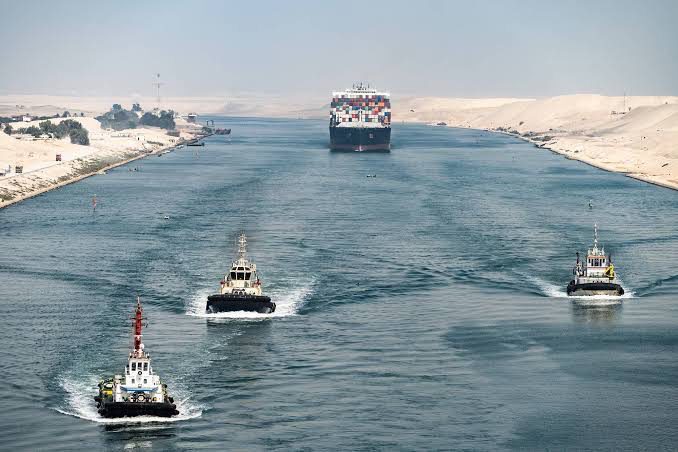
Essential Shipping Routes for UAE-Ukraine Trade
Key Insights into Sea Freight
Given the geographical distance, maritime transport routes span multiple water bodies. Major routes for shipping to Ukraine involve passing through the Strait of Hormuz, crossing the Arabian Sea, navigating through the Red Sea via the Bab-el-Mandeb Strait, and transiting the Suez Canal before entering the Mediterranean Sea through to Ukraine’s Black Sea ports.
Sea shipping to Ukraine involves transporting bulk commodities, such as grains, metals, oil products, and containerized goods. Shipping times are 18 to 22 days, depending on the specific ports of origin and destination.
Shipping cargo from the UAE to Ukraine primarily follow the Arabian Sea and Red Sea passage, entering the Mediterranean through the Suez Canal, and finally reaching the Black Sea. The typical transit time is around 18 to 22 days, depending on the specific starting and ending ports.
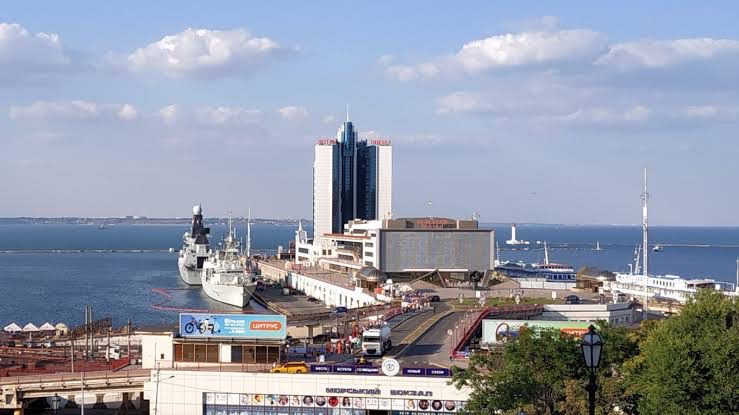
Air Freight and Its Role in UAE-Ukraine Trade
The geopolitical landscape and the need for swift deliveries have elevated the role of air cargo service to Ukraine. Air freight offers a significant advantage over sea transport in terms of speed, with shipments typically reaching their destination within 3 to 5 days, compared to longer times on sea routes.
Ensuring timely delivery with minimized risk of damage drives businesses to opt for air cargo service to Ukraine, despite the higher costs. Additionally, air freight provides a reliable alternative to maritime routes due to regional conflicts or logistical bottlenecks.
Major Ports in UAE-Ukraine Trade Lane
UAE Ports
- Jebel Ali Port: The UAE’s largest port and the busiest in the Middle East, Jebel Ali handles most of the exported cargo to Ukraine.
- Khalifa Port: Located in Abu Dhabi, this deep-water port facilitates containerized and bulk cargo in the UAE-Ukraine trade lane.
- Zayed Port: Primarily a multipurpose port, Zayed Port in Abu Dhabi handles general cargo, including vehicles and machinery.
- Port Rashid: Although mainly a cruise terminal nowadays, it still manages some cargo operations for specialized shipments.
Ukraine Ports
- Chornomorsk Port: A critical gateway for Ukraine’s grain exports, Chornomorsk also handles containers and bulk cargo.
- Odesa Port: One of Ukraine’s largest ports, Odesa handling various exports, including metals and agricultural products destined for the UAE.
- Pivdennyi Port: Located near Odesa, Ukraine’s deepest port handles large volumes of heavy industry goods.
Key Airports and Airlines
In the UAE, Dubai International Airport (DXB) and Zayed International Airport (AUH) are the main air cargo hubs. On the Ukrainian side, Boryspil International Airport (KBP) in Kyiv handles most of the country’s cargo traffic. Lviv Danylo Halytskyi International Airport (LWO) offers direct access to European markets from western Ukraine. Odesa International Airport (ODS) in southern Ukraine supports the efficient distribution of goods across the region.
Emirates SkyCargo, with its extensive fleet, rapidly moves goods between the two nations. Etihad Cargo provides specialized and temperature-controlled shipping for pharmaceuticals and perishables, while Ukraine International Airlines focuses on connecting Ukraine with the Middle East and beyond.
Essential Customs Guidelines for Smooth Trade
Insights into Ukrainian Customs Processes
Comprehensive Guide to Export Documentation
For goods leaving Ukraine for the UAE, exporters must prepare:
- Commercial Invoice: A detailed invoice that outlines the transaction, including the goods’ value, quantity, and terms of sale.
- Export Declaration: A mandatory document submitted to Ukrainian customs detailing the goods’ nature, quantity, and value.
- Certificate of Origin: Often required to confirm the origin of the goods and qualify for any preferential tariffs under trade agreements.
- Packing List: This document indicates how the goods are packed, including weights and measurements, to assist with logistics and customs clearance.
Ukraine’s Import Regulations
Importing goods into Ukraine requires compliance with various regulations, including paying the applicable tariffs and taxes. Ukraine’s import tariffs depend on the goods classification, with rates varying across product categories. Most imported goods attract a standard Value-added Tax (VAT) of 20%, calculated on the customs value plus duty.
Additionally, excise taxes may apply to certain products such as alcohol, tobacco, and fuel. Importers must also ensure goods meet Ukraine’s technical and safety standards, which may require certification and testing.
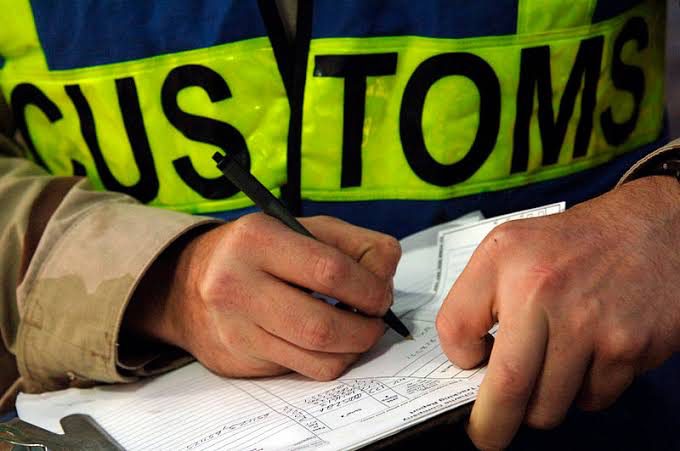
Import Documentation and Requirements
For importing goods into Ukraine, the following documents are essential:
- Customs Declaration: The key document submitted to Ukrainian customs, detailing the goods being imported, their value, and origin.
- Commercial Invoice: Similar to the export process, this invoice details the transaction and is required for customs clearance.
- Bill of Lading or Airway Bill: Depending on the mode of transport, this document serves as proof of shipment and outlines the details of the cargo.
- Certificate of Conformity: Depending on the product, this certificate ensures the goods comply with Ukrainian standards.
Essential UAE Customs Guidelines for Traders
Key Documents for Exporting from UAE
Exporting goods from the UAE requires the following key documents:
- Commercial Invoice: This document provides details of the transaction, including the value, quantity, and description of the goods.
- Certificate of Origin: Issued by the Chamber of Commerce, this document certifies the country of origin of the goods, which determines applicable tariffs under trade agreements.
- Packing List: It details the shipment’s contents, dimensions, and weight, useful in logistics and customs clearance.
- Export Declaration: This mandatory document submitted to UAE Customs outlines the details of the goods being exported.
UAE Export Regulations
The UAE’s export regulations ensure all exported goods comply with both domestic and international standards. Exporters must obtain necessary licenses, particularly for regulated items such as food, pharmaceuticals, and chemicals. Certain goods may require specific permits, particularly for international car shipping services to Ukraine.
UAE Import Regulations
The UAE imposes 5% standard customs duty on most imports, with tobacco and alcohol subject to higher rates. Also, goods entering the UAE must comply with the country’s health, safety, and environmental standards. Additionally, the UAE’s numerous free zones offer duty exemptions, provided they are re-exported or used within the free zone for manufacturing purposes.
Comprehensive Checklist for Import Documents
For importing goods into the UAE, businesses must submit:
- Bill of Lading or Airway Bill: Depending on the transport mode, this document provides proof of shipment and outlines the cargo details.
- Commercial Invoice: This document details the transaction, including the value, quantity, and description of the goods.
- Packing List: It provides information on the packaging and contents of the shipment, which assists customs officials in verifying the cargo.
- Import Declaration: This is a critical document that must be submitted to UAE Customs, providing details about the goods and their value for duty assessment.
Maximizing Trade Potential: Opportunities vs. Challenges
Exploring Emerging Opportunities in Trade
Top Sectors with Promising Growth Potential
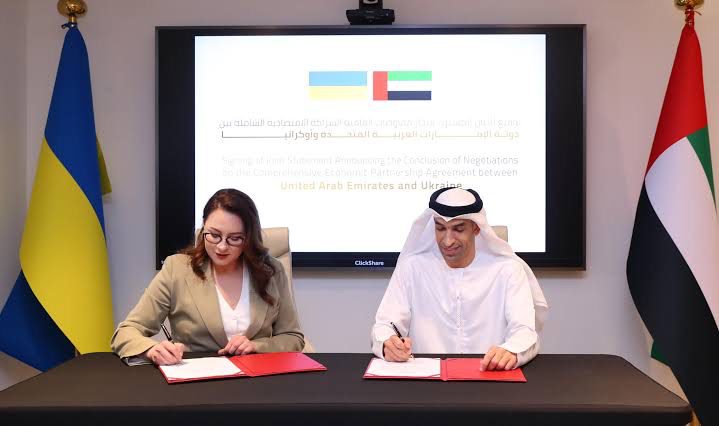
The UAE-Ukraine trade lane is set to grow significantly, driven by strategic economic partnerships and the CEPA. This agreement should enhance market access by removing tariffs and trade barriers between the two nations.
Several industries in the UAE and Ukraine with significant potential are:
- Agriculture: Ukraine’s vast arable land and expertise in grain production are vital for UAE’s food security.
- Technology and Innovation: Diversification of the UAE’s economy beyond oil, particularly to fintech and smart cities, benefits Ukrainian IT and tech firms.
- Infrastructure and Logistics: Both nations are pursuing opportunities for collaboration in logistics and transportation.
Bilateral Trade Growth Through Key Agreements
The UAE and Ukraine have solidified their economic relationship through the CEPA, which aims to enhance trade by removing tariffs on key products. This agreement also supports Ukraine’s post-war recovery by attracting investments in infrastructure, logistics, and IT.
Additionally, various Memorandums of Understanding (MoUs) have been signed to promote bilateral cooperation in sectors such as energy, manufacturing, and agriculture, further strengthening the economic ties between the two nations.
Emerging Markets in UAE-Ukraine Trade
In Ukraine, the IT and tech sectors are rapidly growing, offering innovative solutions that connect to the UAE’s vision for a diversified, knowledge-based economy. In the UAE, the renewable energy sector presents opportunities for Ukrainian firms specializing in green technologies to enter a rapidly developing market.
Strategies for Addressing Trade Challenges
Language and Cultural Barriers
The UAE, with its Arabic language and diverse expatriate population, contrasts with Ukraine, where Ukrainian and Russian are predominantly spoken. This language barrier can complicate negotiations, documentation, and day-to-day communication. Moreover, differences in business etiquette and cultural expectations can lead to misunderstandings and slow down trade activities.
Political Instability
The uncertainty surrounding Ukraine’s political landscape and its geopolitical tensions with Russia affects investor confidence and increases the risk of trade disruptions. Despite these challenges, the UAE maintains a neutral stance and still pursues trade relations, although businesses must remain adaptable to changing political dynamics.
Infrastructure Challenges
Damage to critical infrastructure, such as roads, railways, and ports, complicates cargo transport within Ukraine and to international markets, including the UAE. Rebuilding and modernizing infrastructure will enhance the reliability and efficiency of trade routes.
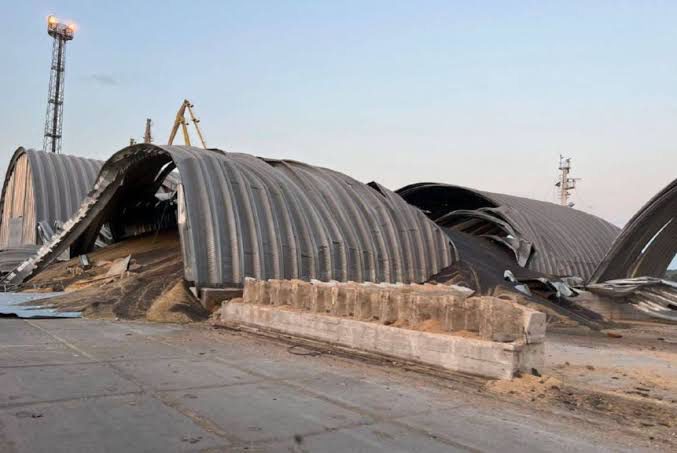
Al Sharqi’s Specialized Services for Efficient UAE-Ukraine Freight Forwarding
Al Sharqi offers comprehensive logistics and freight forwarding services for Ukraine to support businesses operating within the UAE-Ukraine trade lane. With a strong focus on efficiency, reliability, and customer satisfaction, we leverage our extensive experience to provide tailored solutions according to your unique business needs.
Our ocean freight services include Full Container Load (FCL) and Less Than Container Load (LCL) options, ensuring flexibility and cost-effectiveness for various shipment sizes. For businesses requiring faster transit times, we collaborate with major airlines and leverage strategic partnerships for timely and secure air freight to Ukraine. Whether it’s high-value goods or time-sensitive shipments, our air freight solutions meet stringent deadlines while maintaining cargo integrity.
Special Services for Cargo to Ukraine
Understanding the specific needs of this trade lane, we offer tailored logistics solutions that include end-to-end shipment management, real-time tracking, and comprehensive customs support.
One standout solution is our Air Cargo Charter Service to Ukraine. By chartering flights, we provide direct routes to reduce transit times and minimize handling risks. This bespoke service is particularly valuable for businesses needing to transport critical supplies or high-value goods, ensuring they reach their destination swiftly and safely.
Unlock the full potential of your business in the UAE-Ukraine trade lane with Al Sharqi.
Our expert logistics solutions are designed to ensure your cargo reaches its destination smoothly and efficiently, whether by sea or air. From comprehensive freight forwarding services for Ukraine to specialized air cargo charter services, we offer the reliability and expertise you need in today’s dynamic market.
Contact Al Sharqi Shipping today to discover how our tailored services can streamline your shipping process and drive your business forward.
Conclusion
UAE-Ukraine trade lane has significant growth potentials, driven by strategic economic partnerships and the Comprehensive Economic Partnership Agreement (CEPA) signed by the two nations. Key industries such as agriculture, technology, and logistics are set to benefit, while the removal of tariffs and trade barriers will enhance market access and investment opportunities.
With Ukraine serving as a bridge to Europe and the UAE as a gateway to Asia and Africa, businesses, such as international car shipping services to Ukraine, can capitalize on enhanced trade routes, diversified markets, and supportive trade policies to drive growth and development in both regions.
FAQ's
The CEPA is a trade agreement finalized in 2024, aimed at enhancing bilateral trade between the UAE and Ukraine. This deal supports Ukraine’s recovery efforts while strengthening supply chains for major exports like grains and metals.
The ongoing conflict in Ukraine presents challenges such as disrupted supply chains and increased risks for investors. However, the UAE remains committed to maintaining and enhancing trade relations, while positioning itself for long-term mutual growth opportunities once stability is restored.
Key industries benefiting from this trade lane include agriculture (especially grain exports from Ukraine), technology, logistics, and manufacturing.
The war in Ukraine has significantly increased shipping costs due to disrupted port operations, longer shipping routes, and higher fuel prices. The effects include increased prices for global consumers, particularly in the food and energy sectors.
Bilateral trade will continue to grow due to the signing of the UAE-Ukraine CEPA. Strategic investments in infrastructure and logistics, coupled with ongoing cooperation, should drive further economic development between the two nations.
Related Articles
A Deep Dive into UAE-Moldova Trade Relations
Introduction The trade relationship between the UAE and Moldova signifies yet another economic and s
Comprehensive Analysis of UAE-Ukraine Trade Relations
Introduction The trade lane between the UAE and Ukraine has gained substantial momentum, particularl
UAE-Russia Trade Lane: Comprehensive Insights and Analysis
Introduction The trade relationship between the UAE and Russia has grown substantially through strat




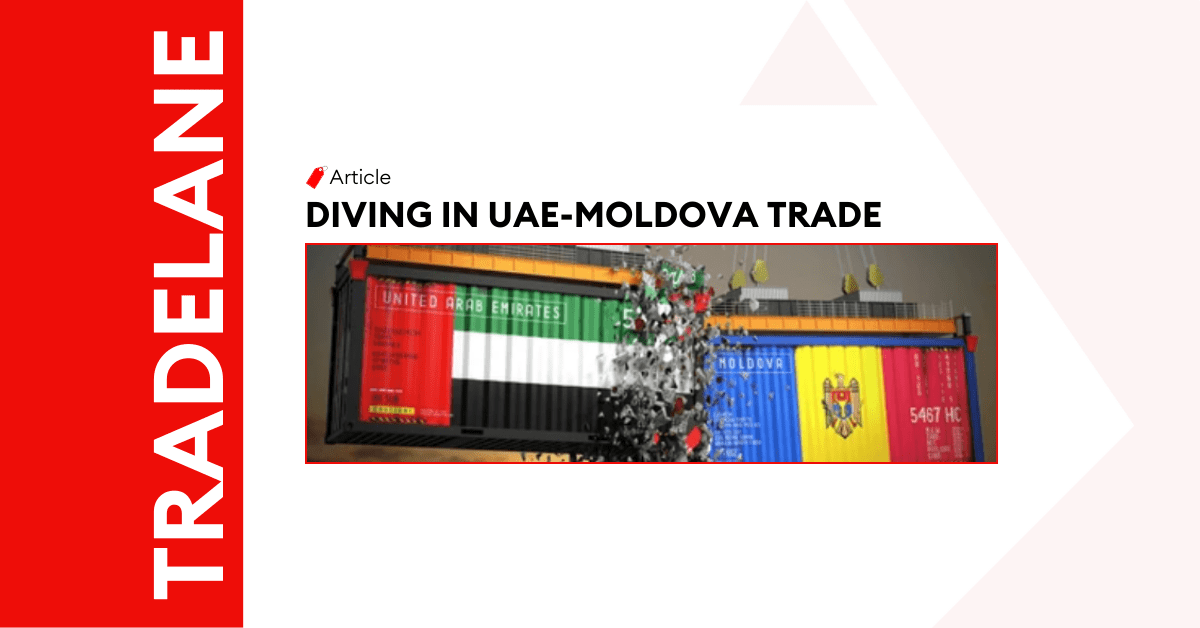
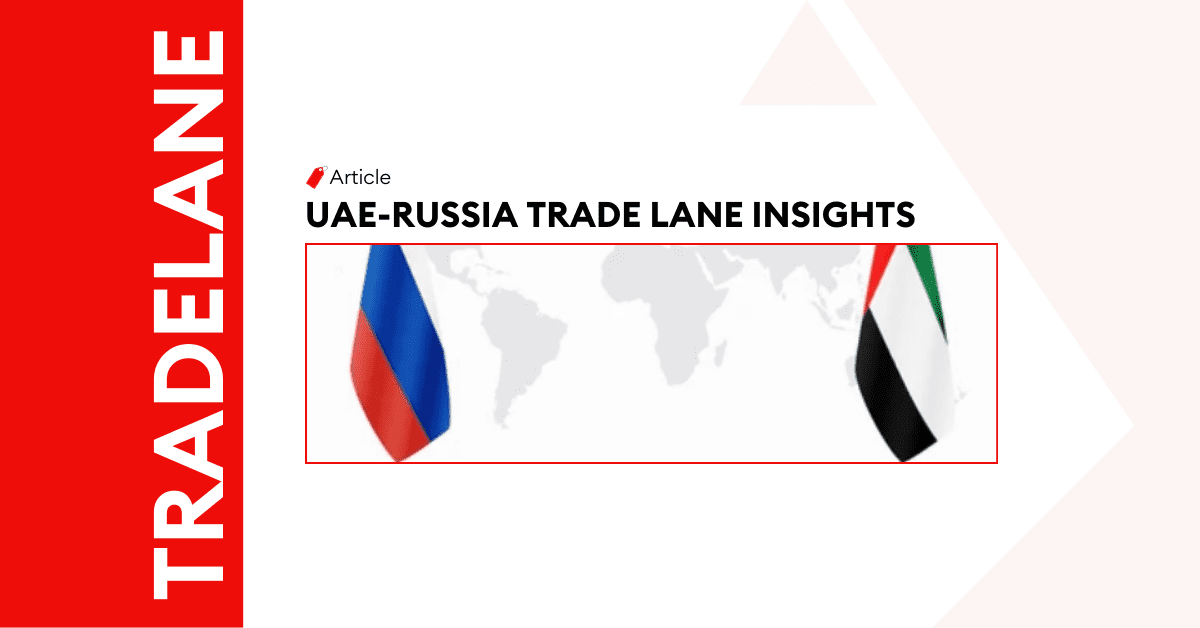
Post a comment
You must be logged in to post a comment.